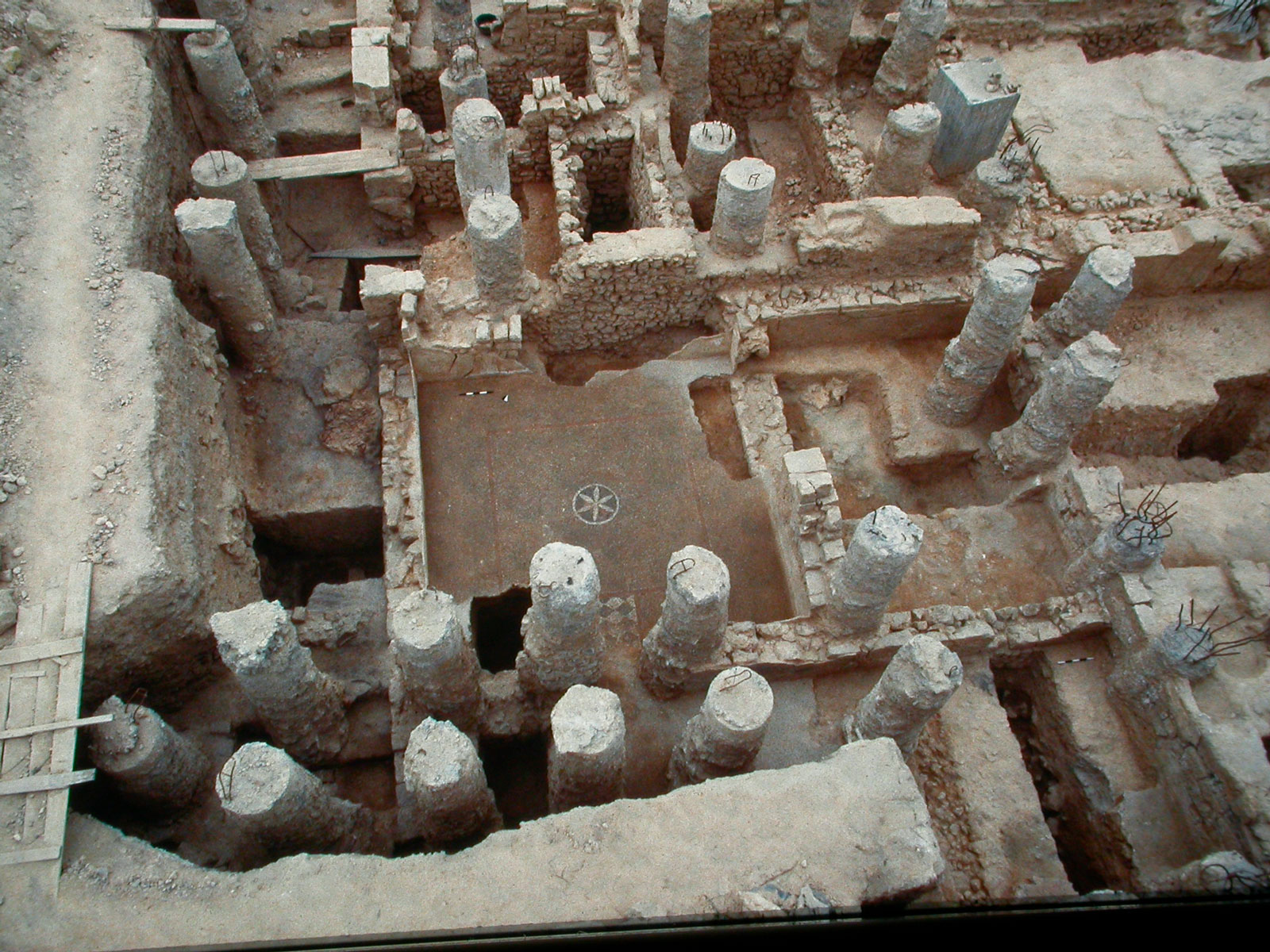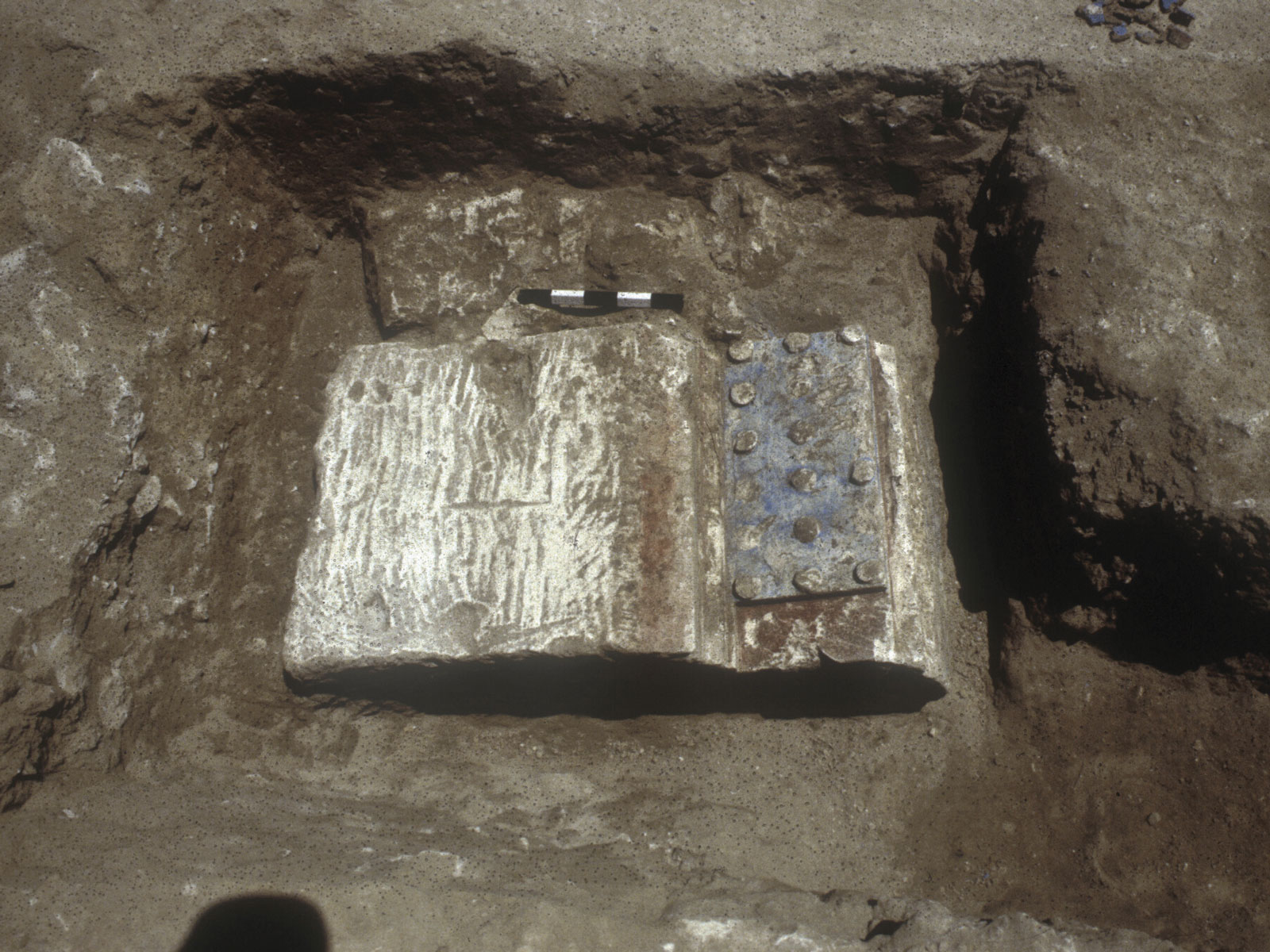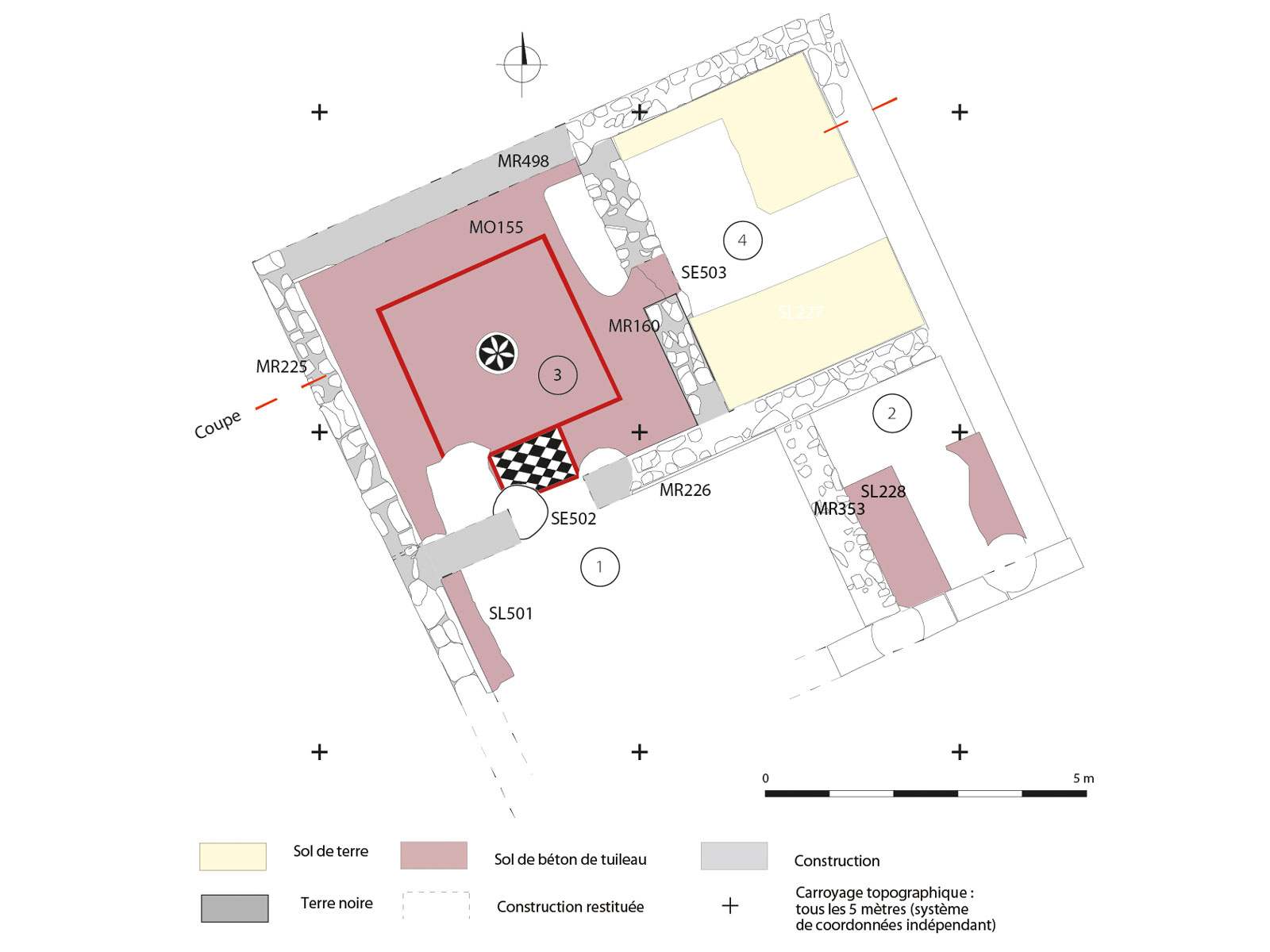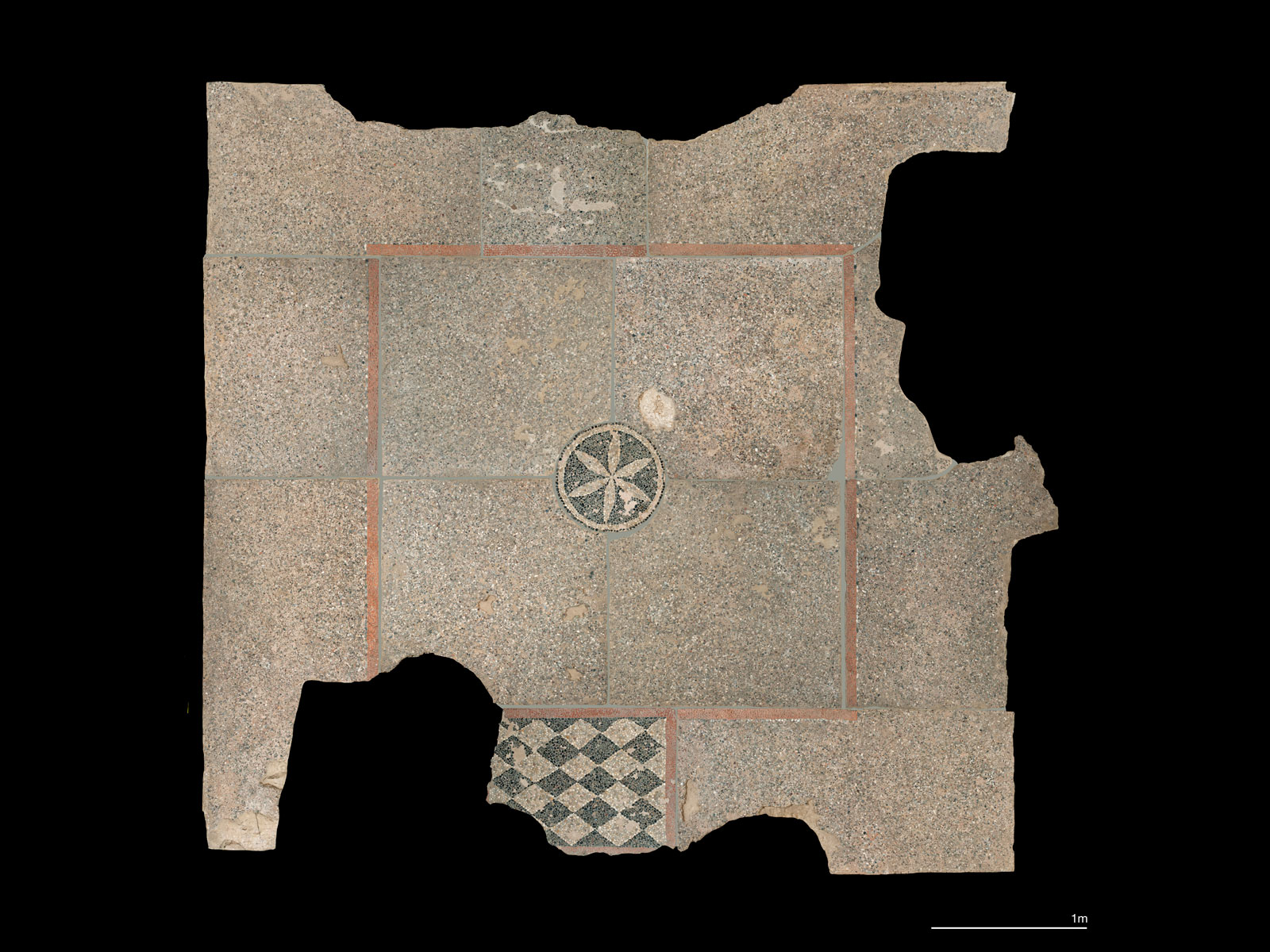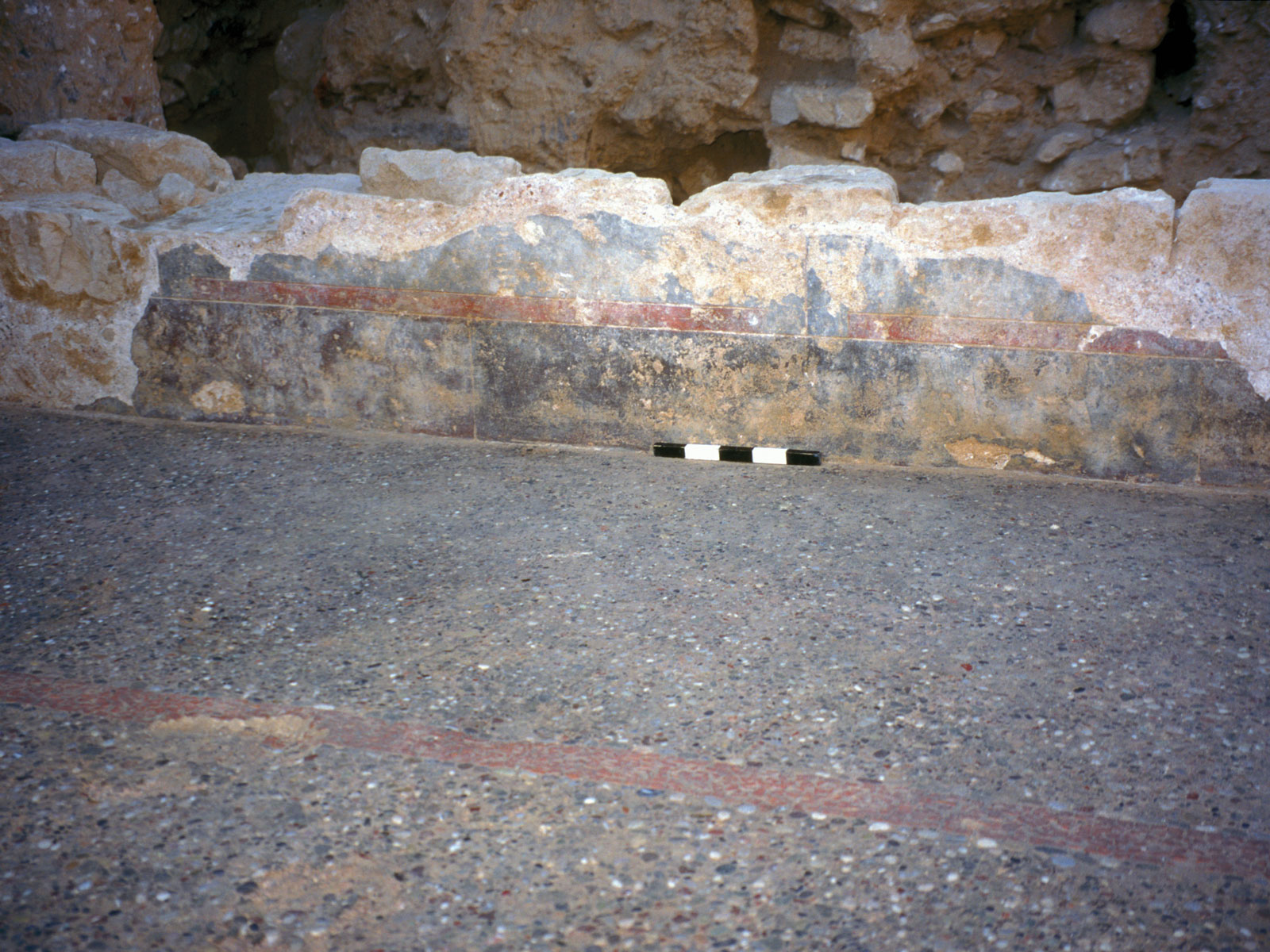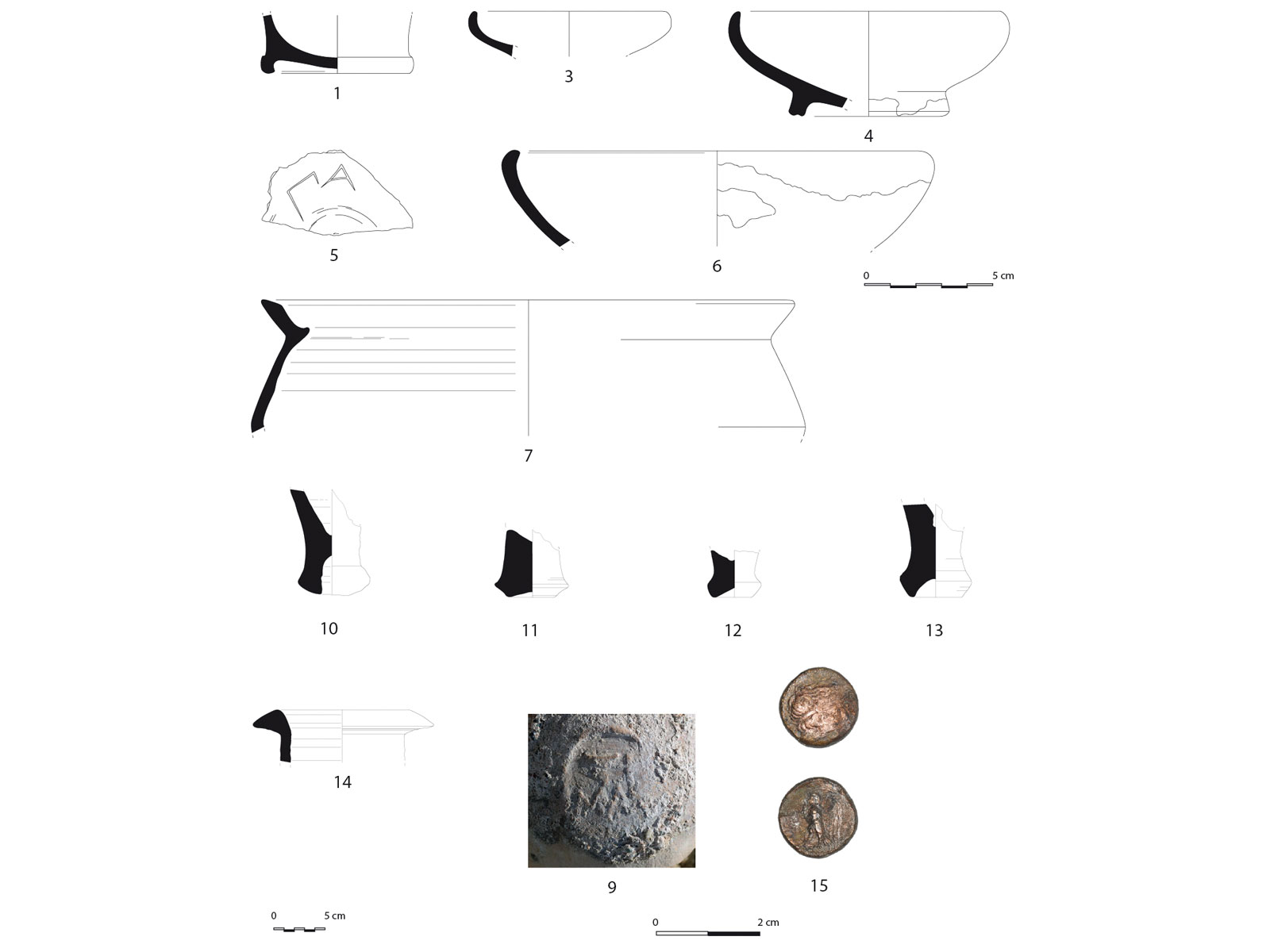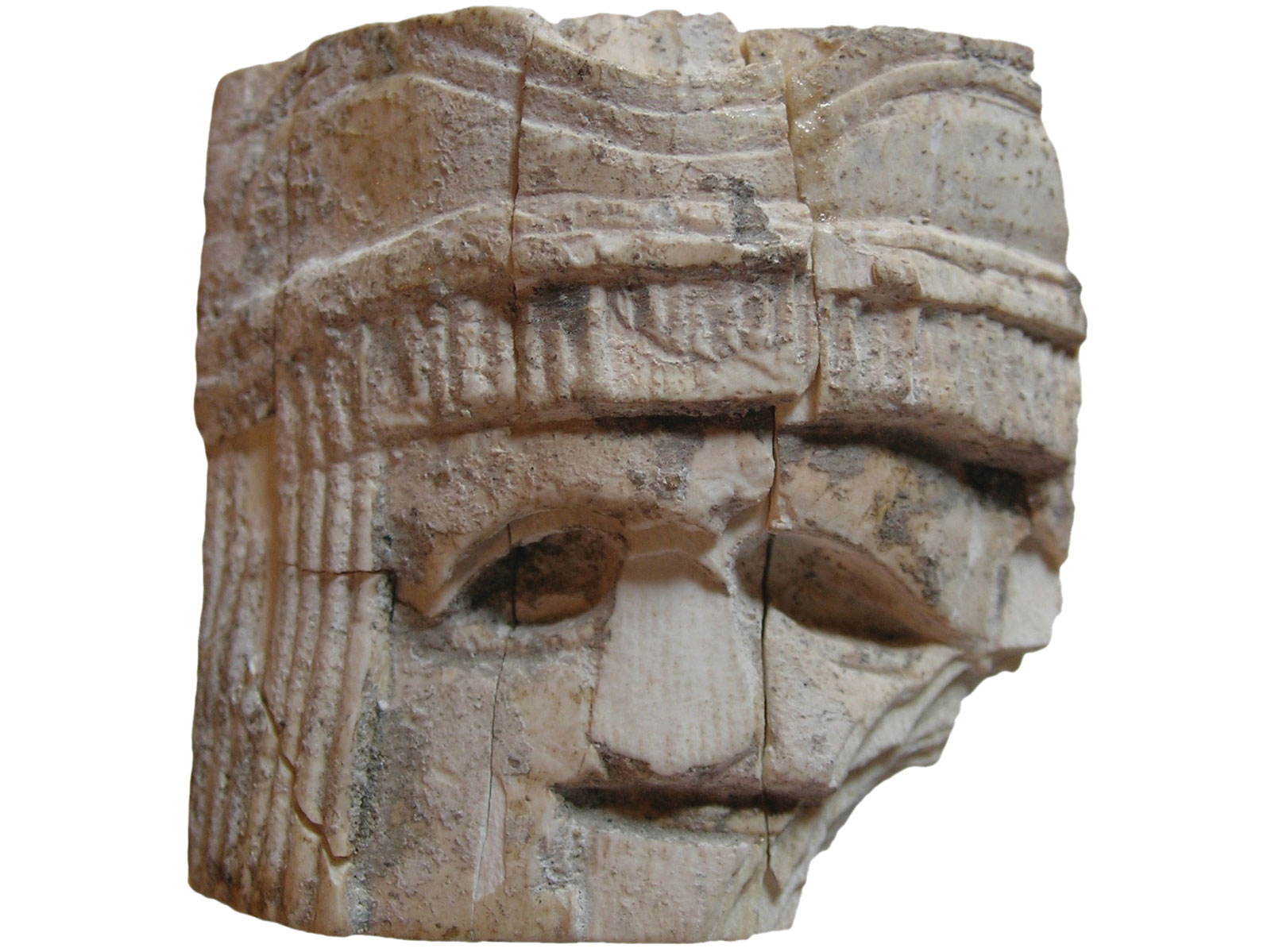Garden of the former British Consulate
Adjacent to the governmental Al-Miri Hospital, the garden of the former British Consulate was, in the 1990s, included in the project to extend the hospital. As the initial digging work affected and destroyed archaeological structures, the Egyptian Ministry of Antiquities asked the CEAlex to intervene. A series of emergency archaeological operations were carried out in 1994 and again in 1995-1997, under the direction of Christophe Requi, at a time when the site had already been prepared for construction with a large number of concrete pillars. The excavated plot is not located along a main axis but within a housing block. It lies close to the intersection of ancient streets R3 and L3, and around one 100 m north of the Cricket Ground site. Excavations revealed the Hellenistic levels of a terraced residential area comprising several houses decorated with mosaics and murals.
Only part of the southern parcel, set into the embankment, could be excavated. It was occupied by two houses. Excavation of the south-eastern house (known as the House of the Rosette) revealed four preserved rooms, including an andron, a banqueting hall, with a floor area of 21.8 m2 covered with a pebble mosaic featuring a rosette at its centre. The stratigraphic context makes it possible to date this piece quite precisely to around 315-300 BC. It is therefore a doubly exceptional ensemble for Alexandria, because of the certain association of a pavement with the corresponding mural decoration, and because of its date which is based on stratigraphic criteria and is very early in the chronology of the city.
A number of pottery deposits from the earliest levels, in connection with the first floors built on the bedrock, have revealed how ceramic tableware was supplied and used by the first generations of Alexandrians.
Further reading:
J.-Y. Empereur, « Alexandrie (Égypte). Le jardin du Consulat britannique », Bulletin de Correspondance Hellénique 119, 1995, p. 747-750.
J.-Y. Empereur, « Alexandrie (Égypte). Le jardin de l’ex-Consulat britannique », Bulletin de Correspondance Hellénique 121, 1997, p. 838-841.
J.-Y. Empereur, « Alexandrie (Égypte). B. Le jardin du consulat britannique », Bulletin de Correspondance Hellénique 122, 1998, p. 619-621.
E. Fragaki, A.-M. Guimier-Sorbets, « Un fragment de corniche peinte hellénistique à Alexandrie », Études Alexandrines 31, Alexandrie, 2013, p. 127-134
A.-M. Guimier-Sorbets, « Chantier de l’ancien Consulat britannique (Alexandrie). Un andrôn alexandrin : architecture, mosaïque et peinture », in M.-D. Nenna (éd.), Alexandrina 5, Études Alexandrines 50, 2020
C. Harlaut, « Aux origines d’Alexandrie et de sa production céramique », in C. Harlaut, J.W. Hayes, Pottery in Hellenistic Alexandria, Études Alexandrines 45, Alexandrie, 2018, p. 9-159.
P. Rifa Abou el-Nil, G. Cankardeş-Șenol, C. Harlaut, A.K. Şenol, « Chantier de l’ancien Consulat britannique (Alexandrie). Fouille du radier de la mosaïque à la rosace et données chronologiques », in M.-D. Nenna (éd.), Alexandrina 5, Études Alexandrines 50, 2020.

